 W
WThe internment of Japanese Americans in the United States during World War II was the forced relocation and incarceration in concentration camps in the western interior of the country of about 120,000 people of Japanese ancestry, most of whom lived on the Pacific Coast. Sixty-two percent of the internees were United States citizens. These actions were ordered by President Franklin D. Roosevelt shortly after Imperial Japan's attack on Pearl Harbor.
 W
WAllegiance is a musical with music and lyrics by Jay Kuo and a book by Marc Acito, Kuo and Lorenzo Thione. The story, set during the Japanese American internment of World War II, was inspired by the personal experiences of George Takei, who stars in the musical. It follows the Kimura family in the years following the attack on Pearl Harbor, as they are forced to leave their farm in Salinas, California and are sent to the Heart Mountain Relocation Center in the rural plains of Wyoming.
 W
WThe Bainbridge Island Japanese American Exclusion Memorial is an outdoor exhibit commemorating the internment of Japanese Americans from Bainbridge Island in the state of Washington. It is located on the south shore of Eagle Harbor, opposite the town of Winslow. Administratively, it is a unit of the Minidoka National Historic Site in Idaho. The mission of the memorial is Nidoto Nai Yoni, “Let It Not Happen Again”.
 W
WKarl Robin Bendetsen was an American colonel who served in Washington Army National Guard during the World War II and later as the Under Secretary of the Army. Bendetsen is remembered primarily for his role as an architect of the internment of Japanese Americans during World War II.
 W
WRalph Lawrence Carr was the 29th Governor of Colorado from 1939 to 1943.
 W
WThe Civil Liberties Act of 1988 is a United States federal law that granted reparations to Japanese Americans who had been interned by the United States government during World War II. The act was sponsored by California's Democratic Congressman Norman Mineta, an internee as a child, and Wyoming's Republican Senator Alan K. Simpson, who had met Mineta while visiting an internment camp. The third co-sponsor was California Senator Pete Wilson. The bill was supported by the majority of Democrats in Congress, while the majority of Republicans voted against it. The act was signed into law by President Ronald Reagan.
 W
WThe Day of Remembrance is a day of observance for the internment of Japanese Americans during World War II. Events in numerous U.S. states, especially in the West Coast, are held on or near February 19, the day in 1942 that Executive Order 9066 was signed by President Franklin D. Roosevelt, requiring internment of all Americans of Japanese ancestry.
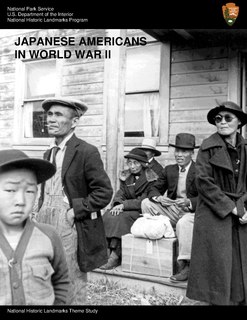 W
WDensho is a nonprofit organization based in Seattle, Washington whose mission is “to preserve and share history of the WWII incarceration of Japanese Americans to promote equity and justice today.” Densho collects video oral histories, photos, documents, and other primary source materials regarding Japanese American history, with a focus on the incarceration of Japanese Americans during World War II. Densho offers a free digital archive of these primary sources, in addition to an online encyclopedia and curricula, for educational purposes.
John Lesesne DeWitt was a general officer in the United States Army, best known for his vocal support of the internment of Japanese-Americans during World War II.
 W
WMilton Stover Eisenhower was an American academic administrator. He served as president of three major American universities: Kansas State University, Pennsylvania State University, and Johns Hopkins University. He was the younger brother of U.S. President Dwight D. Eisenhower.
 W
WExecutive Order 9066 was a United States presidential executive order signed and issued during World War II by United States president Franklin D. Roosevelt on February 19, 1942. This order authorized the secretary of war to prescribe certain areas as military zones, clearing the way for the incarceration of Japanese Americans, German Americans, and Italian Americans in U.S. concentration camps.
 W
WFairplex, known prior to 1984 as the Los Angeles County Fairgrounds, has been the home of the L.A. County Fair since 1922. It is located in the city of Pomona, California. The L.A. County Fair is now held during the month of September, but the facility is used year-round to host a variety of educational, commercial, and entertainment such as trade and consumer shows, conventions, and sporting events.
 W
WThe FBI Indexes, or Index List, was a system used to track American citizens and other people by the Federal Bureau of Investigation (FBI) before the adoption by the FBI of computerized databases. The Index List was originally made on paper index cards, first compiled by J. Edgar Hoover at the Bureau of Investigations before he was appointed director of the FBI. The Index List was used to track U.S. citizens and others believed by the FBI to be dangerous to national security, and was subdivided into various divisions which generally were rated based on different classes of danger the subject was thought to represent. There is no indication the FBI stopped adding names onto its Index List before September 11, 2001.
 W
WHirabayashi v. United States, 828 F.2d 591, is a case decided by the Ninth Circuit Court of Appeals and recognized for both its historical and legal significance. The case is historically significant for vacating the World War II-era convictions of Japanese American civil rights leader, Gordon Hirabayashi. Those convictions were affirmed in the Supreme Court's 1943 decision, Hirabayashi v. United States. The case is legally significant for establishing the standard to determine when any federal court in the Ninth Circuit may issue a writ of coram nobis.
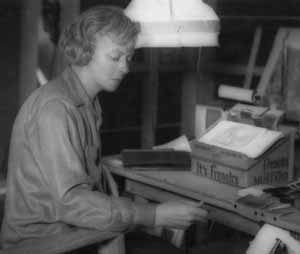 W
WEstelle Ishigo, née Peck, was an American water color artist. During World War II she and her husband were interned at the Heart Mountain Relocation Center in Wyoming. She subsequently wrote about her experiences in Lone Heart Mountain and she also was the subject of the Oscar winning documentary Days of Waiting: The Life & Art of Estelle Ishigo.
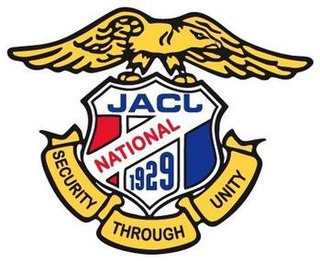 W
WThe Japanese American Citizens League is an Asian American civil rights charity, headquartered in San Francisco, with regional offices across the United States.
 W
WThe Japanese American Memorial to Patriotism During World War II is a National Park Service site to commemorate the contributions of American citizens of Japanese ancestry and their parents who patriotically supported the United States despite unjust treatment during World War II.
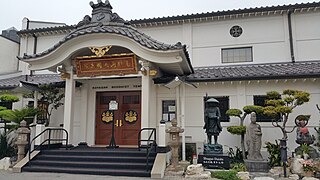 W
WKoyasan Beikoku Betsuin , also known as Koyasan Buddhist Temple, is a Japanese Buddhist temple in the Little Tokyo district of Downtown Los Angeles, California, United States. Founded in 1912, it is one of the oldest existing Buddhist temples in the North American mainland region. The temple is a branch of Koyasan Shingon Buddhism and is the North America regional headquarters for the school.
 W
WRalph Lazo was the only known non-spouse, non-Japanese American who voluntarily relocated to a World War II Japanese American internment camp. His experience was the subject of the 2004 narrative short film Stand Up for Justice: The Ralph Lazo Story.
 W
WThe Long Journey Home was a ceremonial event held at the main campus of the University of Washington on May 18, 2008, commemorating the Japanese American students who, due to the passage of Executive Order 9066 in 1942, were forced to leave the school and live in internment camps in the western United States. For nearly seventy years, many Japanese Americans were unable to return to the university to complete their education. Some attended at other universities, while others were forced to end their college career early because of financial reasons. In order to recognize the Japanese American students affected by the government's decision, the University of Washington carried out a ceremony "to honor the students and to educate current and future generations about the grievous national tragedy" by incorporating guest speakers and video memoirs while the students honored at the day's ceremony were given honorary degrees from the University of Washington.
 W
WThe Lordsburg killings refers to the shooting of two elderly Japanese American men named Toshiro Kobata and Hirota Isomura at an internment camp outside Lordsburg, New Mexico, on July 27, 1942. The shooter, Private First Class Clarence Burleson, was charged with murder, but he was later acquitted after testifying that he was following military protocol.
 W
WThe Manzanar Children's Village was an orphanage for children of Japanese ancestry incarcerated during World War II as a result of Executive Order 9066, under which President Franklin Roosevelt authorized the forced removal of Japanese Americans from the West Coast of the United States. Contained within the Manzanar concentration camp in Owens Valley, California, it held a total of 101 orphans from June 1942 to September 1945.
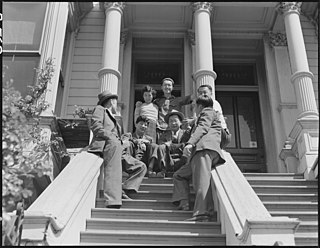 W
WMike Masaru Masaoka was born in Fresno, California. The family moved to Salt Lake City where Masaoka legally changed his first name to "Mike" and became a member of The Church of Jesus Christ of Latter-day Saints.
 W
WThe Minidoka Irrigator was a weekly newspaper published at the Minidoka Relocation Center located in Hunt, Idaho.
 W
WDillon Seymour Myer was a United States government official who served as Director of the War Relocation Authority, Director of the Federal Public Housing Authority, and Commissioner of the Bureau of Indian Affairs. He also served as President of the Institute of Inter-American Affairs. He is the subject of Keeper of Concentration Camps: Dillon S. Myer and American Racism by Richard T. Drinnon.
 W
WThe Nihon Go Gakko alternately, Nihon Gogakko, in what was then Tacoma, Washington's Japantown, was one of 24 Japanese language schools that existed in Washington prior to World War II.
 W
WNo-No Boy (2010) is a play written by Ken Narasaki adapted from the novel of the same title by John Okada, originally produced at the Miles Memorial Playhouse in Santa Monica, California, in association with Timescape Arts Group. It is a drama in two acts. The play was directed by Alberto Isaac, and received its world premiere on Saturday, March 27, 2010. The story follows a Japanese American World War II draft resister as he returns home from prison, in 1946.
 W
WJoyce Nakamura Okazaki is an American citizen of Japanese heritage who was forcibly removed with her family from their Los Angeles home and placed in the Manzanar War Relocation camp in 1942. She was photographed by Ansel Adams in both 1943 and 1944 for his book, Born Free and Equal: The Story of Loyal Japanese Americans. In the 2001 reprint of the book, Okazaki's photograph appeared on the book cover. She is the treasurer of the Manzanar Committee, an NGO which promotes education about the World War II incarceration of Japanese-Americans.
 W
WCulbert Levy Olson was an American lawyer and politician. A Democratic Party member, Olson was involved in Utah and California politics and was elected as the 29th governor of California from 1939 to 1943.
 W
WMarvin Kaufmann Opler was an American anthropologist and social psychiatrist. His brother Morris Edward Opler was also an anthropologist who studied the Southern Athabaskan peoples of North America. Morris and Marvin Opler were the sons of Austrian-born Arthur A. Opler, a merchant, and Fanny Coleman-Hass. Marvin Opler is best known for his work as a principal investigator in the Midtown Community Mental Health Research Study. This landmark study hinted at widespread stresses induced by urban life, as well as contributing to the development of the burgeoning field of social psychiatry in the 1950s.
 W
WPropaganda for Japanese-American internment is a form of propaganda created between 1941 and 1944 within the United States that focused on the relocation of Japanese Americans from the West Coast to internment camps during World War II. Several types of media were used to reach the American people such as motion pictures and newspaper articles. The significance of this propaganda was to project the relocation of Japanese Americans as matter of national security, although according to a federal commission created by President Jimmy Carter in 1980:The promulgation of Executive Order 9066 was not justified by military necessity, and the decisions that followed from it – detention, ending detention and ending exclusion – were not driven by analysis of military conditions. The broad historical causes which shaped these decisions were race prejudice, war hysteria and a failure of political leadership.
 W
WThe Renunciation Act of 1944 was an act of the 78th Congress regarding the renunciation of United States citizenship. Prior to the law's passage, it was not possible to lose U.S. citizenship while in U.S. territory except by conviction for treason; the Renunciation Act allowed people physically present in the U.S. to renounce citizenship when the country was in a state of war by making an application to the Attorney General. The intention of the 1944 Act was to encourage Japanese American internees to renounce citizenship so that they could be deported to Japan.
 W
WThe Santa Fe riot was a confrontation at a Japanese internment camp near Santa Fe, New Mexico, during World War II. On March 12, 1945, approximately 275 internees assembled in Camp Santa Fe to watch and protest the removal of three men to another camp. During which, a scuffle broke out between the internees and the Border Patrol agents who were guarding the facility, resulting in the use of tear gas grenades, batons, and the serious injury of four internees.
 W
WSeabrook is an unincorporated community located within Upper Deerfield Township in Cumberland County, New Jersey, United States. The area is served as United States Postal Service ZIP code 08302. The unincorporated community and the census-designated Place Seabrook Farms within it are each named after Charles F. Seabrook, a businessman who at one point ran the largest irrigated truck farm in the world in this region.
 W
WShikata ga nai (仕方がない), pronounced [ɕi̥kata ɡa naꜜi], is a Japanese language phrase meaning "it cannot be helped" or "nothing can be done about it". Shō ga nai (しょうがない), pronounced [ɕoː ɡa naꜜi] is an alternative.
 W
WThe third season of Teen Wolf, an American supernatural drama created by Jeff Davis and to some extent, based on the 1985 film of the same name, premiered on June 3, 2013. The series was renewed for a third season of 24 episodes on July 12, 2012.
 W
WThe War Relocation Authority (WRA) was a United States government agency established to handle the internment of Japanese Americans during World War II. It also operated the Fort Ontario Emergency Refugee Shelter in Oswego, New York, which was the only refugee camp set up in the United States for refugees from Europe. The agency was created by executive order on March 18, 1942, by President Franklin D. Roosevelt, and was terminated June 26, 1946, by order of President Harry S. Truman.
 W
WThe World War II Valor in the Pacific National Monument was a U.S. National Monument honoring events, people, and sites of the Pacific Theater engagement of the United States during World War II. The John D. Dingell, Jr. Conservation, Management, and Recreation Act, signed into law March 12, 2019, abolished the National Monument, replacing it with Pearl Harbor National Memorial, Aleutian Islands World War II National Monument, and Tule Lake National Monument.